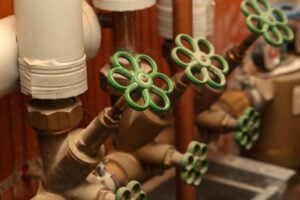5 Energy Efficiency Tips for Small Businesses

When it comes to energy efficiency, it’s easy to assume that large organizations with deep pockets and scalable processes are the only ones who can experience significant savings. But you may be surprised to learn that small steps make a big difference.
Try These 5 Small (Yet Effective) Tips
You don’t have to roll out a million-dollar green strategy or tear down your office building and erect a LEED-certified masterpiece in its place. In fact, sometimes it’s the smallest and most incremental changes that have the biggest impact. When compounded together, smart tweaks can yield significant results. Here’s a look at a few ways you may be able to generate results in this area.
1. Address Lighting
If you’re serious about making your office a more energy efficient place, pay attention to lighting. More specifically, implement the following tips:
- If replacing old lighting, consider any new technologies that may allow you to reduce the overall number of existing fixtures.
- Replace traditional incandescent “Exit” signs with LED alternatives. The LED version uses approximately 10 percent of the wattage of the traditional version (and lasts as much as 50-times longer).
- Use lighting occupancy sensors to automatically turn off lights in conference rooms, break rooms, and other areas of the building that don’t get used as frequently.
- Utilize natural light and dim artificial light when there’s enough sunlight to illuminate interior spaces.
2. Be Smart About Temperature Control
Heating and cooling can account for a significant percentage of energy usage in an office space. The smarter you are about temperature control, the more efficient you can be. Here are a few suggestions:
- During winter, the office thermostat should land somewhere between 65 and 68 degrees during business hours (and 60 to 65 degrees during unoccupied stretches.) During the summer, the ideal temperature is between 78 and 80 degrees during business hours (and above 80 during unoccupied hours).
- Install smart thermostats so that the temperature can be adjusted based on factors like time of day, weather, and movement.
- Require a pin code to adjust the temperature setting on the thermostat. (This prevents employees from moving the temperature up or down without your knowledge.)
3. Use These Office Equipment Hacks
When it comes to office equipment, there are several things you can do to lower energy consumption and make your workplace a more efficient space:
- To reduce heat gain, turn off computers, printers, copiers, and other equipment during non-business hours. (This is particularly important during the summer, when the heat can cause your cooling system to work overtime.)
- When purchasing any new office equipment, look for ENERGY STAR options. Many of these appliances offer energy savings of more than 50 percent (when compared to traditional options).
4. Reduce the Need for In-Person Meetings
While there is certainly a time and place for gathering in-person and having a face-to-face meeting in a conference room, it’s not always necessary. (In fact, it could be argued that it’s rarely necessary.)
To create a truly energy efficient organization, you should be looking for opportunities to encourage remote working. Whether it’s one day a week or five, shifting to a remote style of work saves time that’s typically spent commuting (and lowers carbon emissions).
In order to reduce the need for in-person meetings, you need to perfect your communications. One of the better options is to use SMS for internal communications. It features high open rates and is extremely convenient when compared to clunkier options like email.
5. Keep Employees Educated
It’s one thing for you, as the business owner or CEO, to want to make the company more energy efficient. But at the end of the day, you’ll never accomplish these goals if you don’t have buy-in from your employees.
One of the secrets to success is keeping employees educated and informed. Paint a clear picture and coalesce your staff around a central idea that’s both relatable and mutually beneficial. This sort of buy-in will accelerate your efforts and remove much of the friction that would otherwise emerge.
Adding it All Up
Making your business more energy efficient is as much a mindset as anything else. When your team believes in the mission and understands the why behind it, you’re much more likely to see results. Keep this in mind as you reorient your approach in this area of business.




